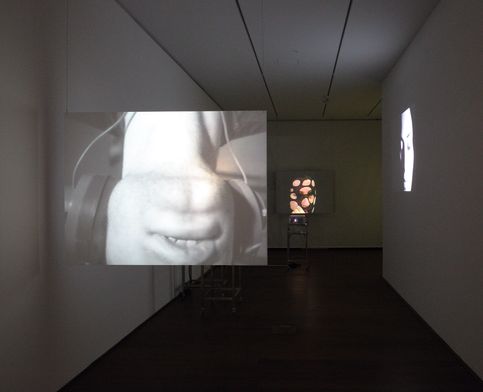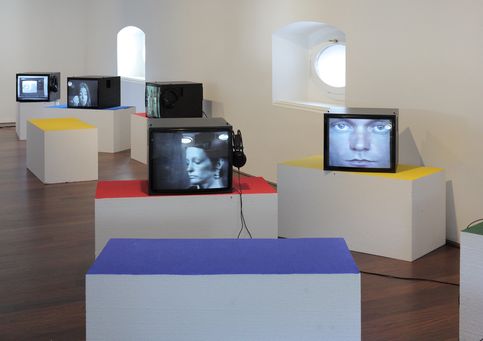Two Faces
Video Portraits from the Generali Foundation Collection
Curator: Jürgen Tabor, Generali Foundation Collection
Venue: Museum der Moderne Salzburg, Rupertinum, Generali Foundation Study Center
Video art has a special relationship to the genre of the portrait. Beginning in the early 1970s, affordable video technology made it possible to easily capture the life and expression of a face in a moving image. Liberated from the expectations of cinema regarding story-telling, video art often turned to introspection and the exploration of external influences on images of the self, and on the body and the mind. With classic works from the comprehensive Generali Foundation Collection, this exhibition traced this approach to portraits.
The first part of the exhibition confronted us with larger-than-life projected portraits that are still founded on sculptural approaches, even if these are video images. The works in the second part of the exhibition were devoted to a theme that became particularly relevant with the advent of this new technology. The focus here was on the reflection of the individual person in a medium that produces deceptively “real” images while at the same time being able to be manipulated in many ways. These works showed how experimenting with levels of reality can challenge concepts of identity and confidence in our own powers of perception. A third key theme in early video art was self-analyses that investigate psychological states of mind and their social and political conditions, sometimes in very intimate fashion. Here, video on the one hand served as a tool for self-observation, and on the other as a medium of transmission directed to a public realm.
Artists: Vito Acconci, Eleanor Antin, Lynda Benglis, Peter Campus, Hermine Freed, Sanja Iveković, Joan Jonas, Elke Krystufek, Bruce Nauman, Martha Rosler, Peter Weibel, Hannah Wilke, and Heimo Zobernig



